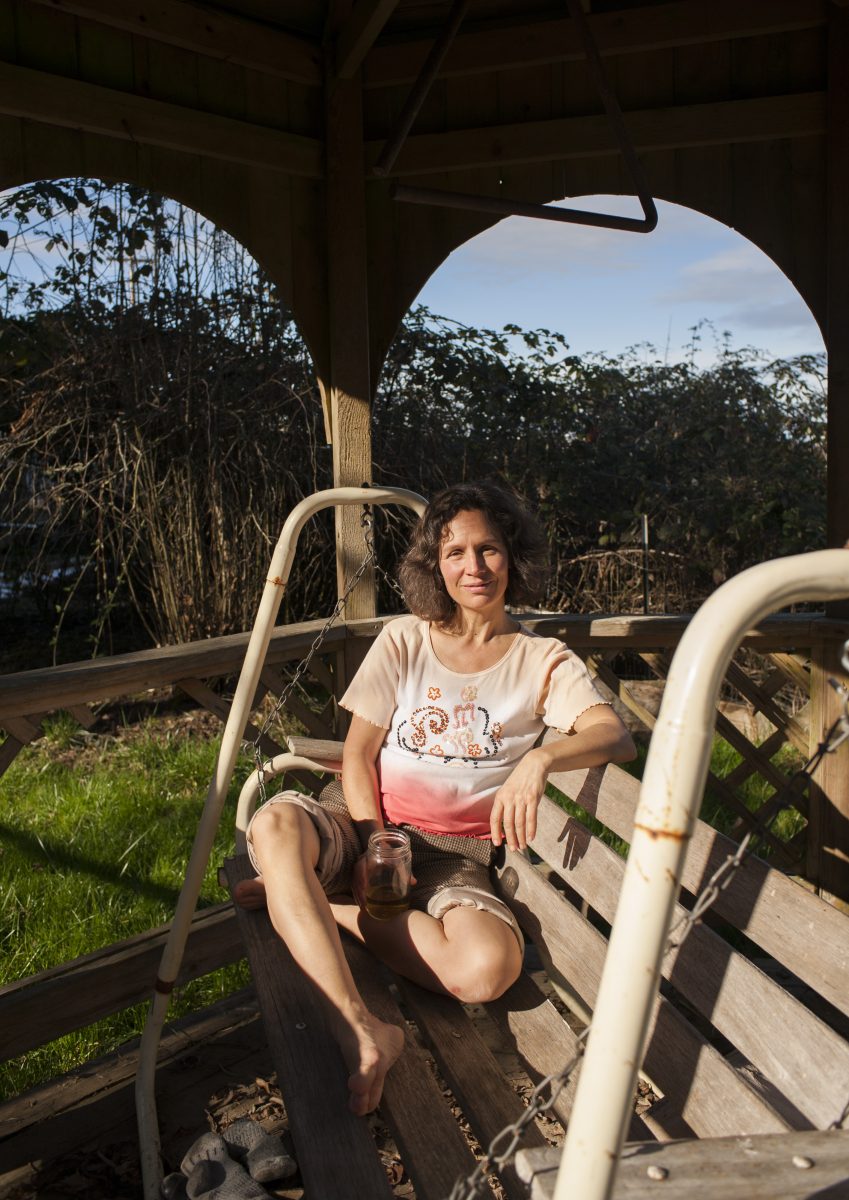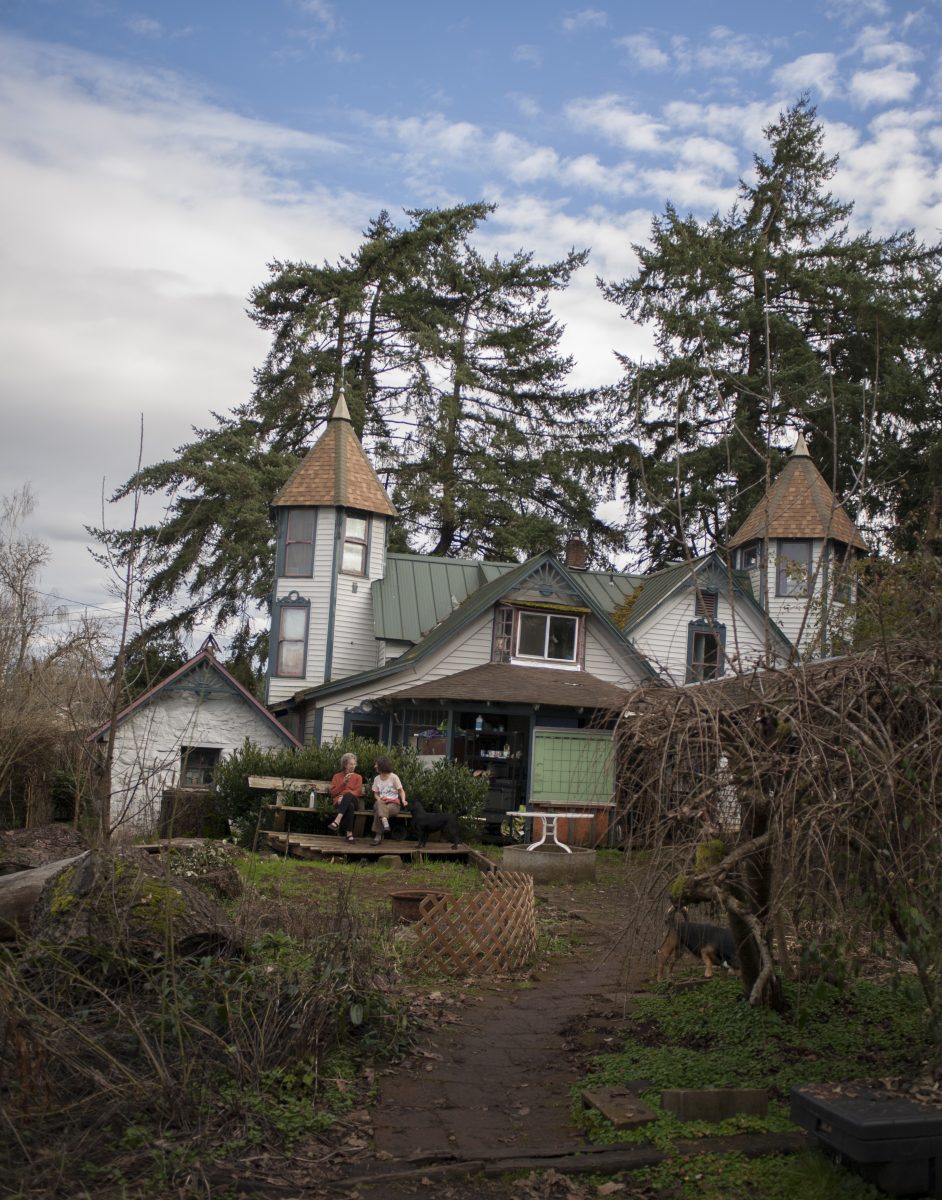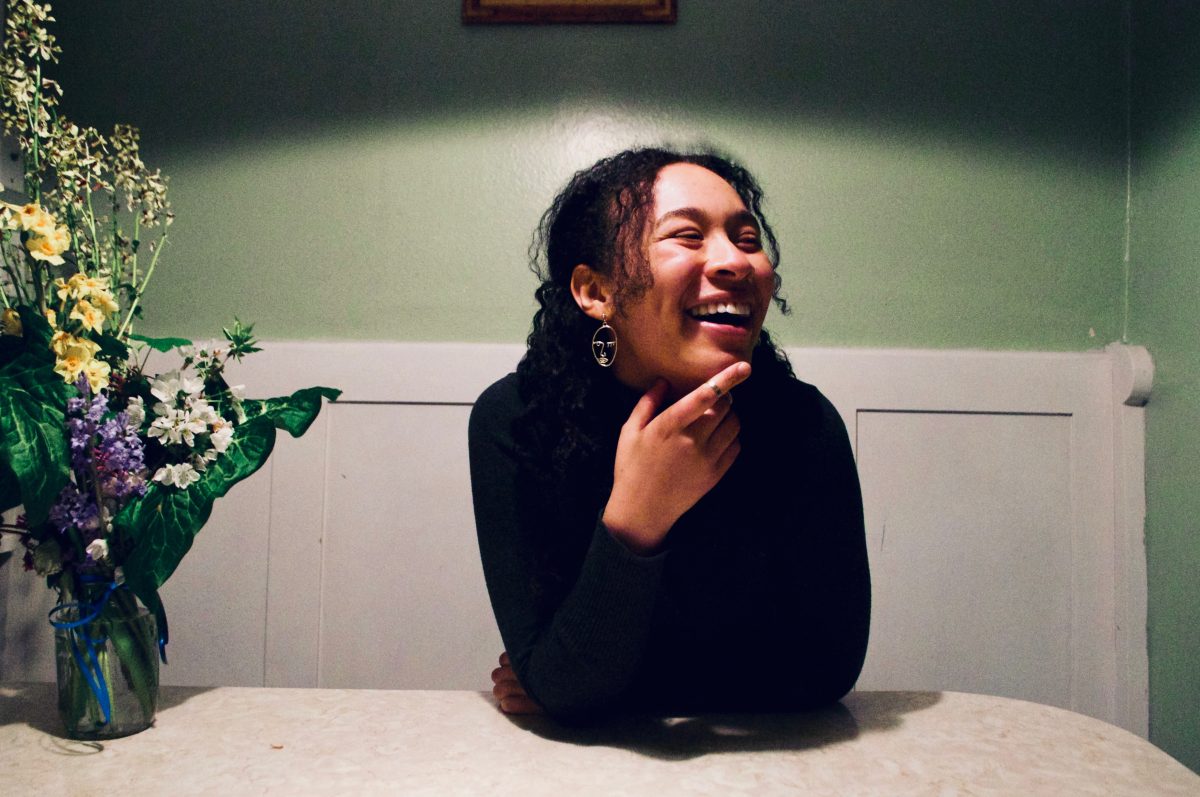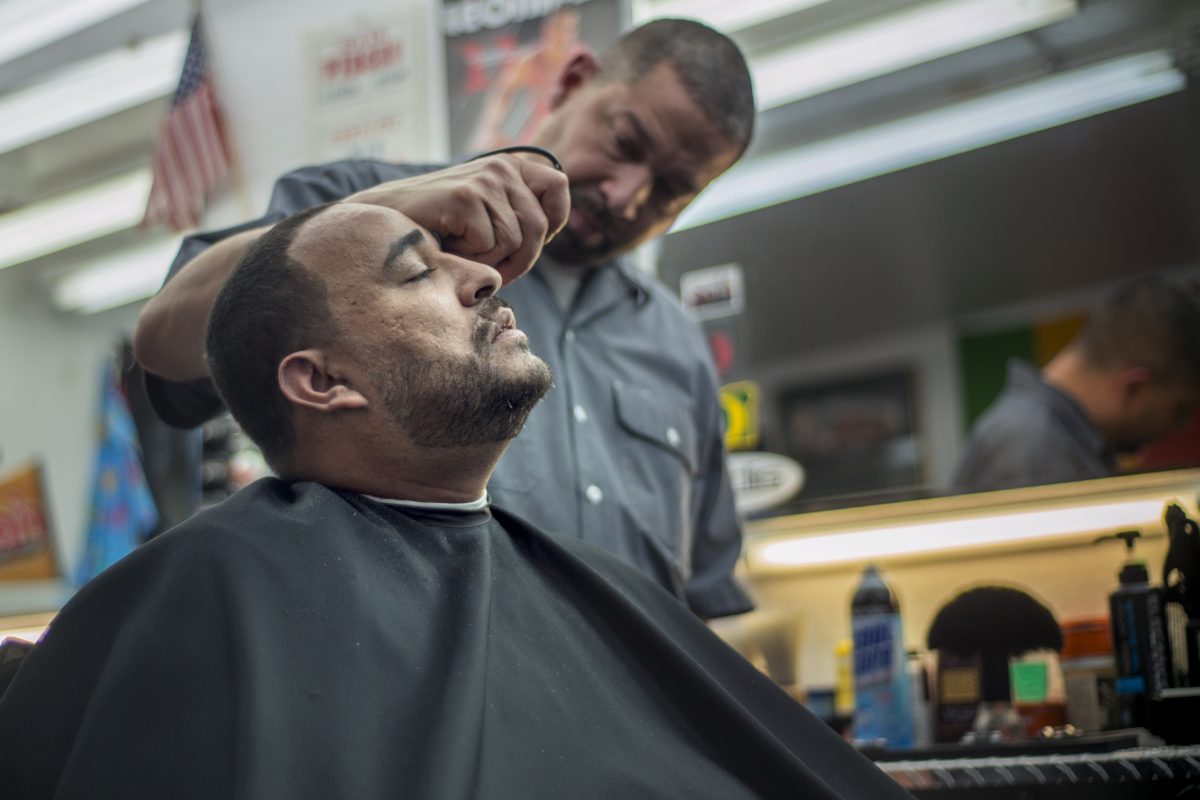It’s an unusually hot February day in Eugene Oregon. Kara Huntermoon wears only a tank top, exposing the yinyang and labyrinth symbols tattooed on either arm as she weaves together willow branches into what she calls a “living fence.” The 37-year-old mother of two is a part-owner at Heart-Culture Farm Community, a 33-acre intentional living situation tucked away next to the expansive Fern-Ridge Wildlife Preserve. Nearly 30 people call Heart-Culture home, most of whom are young families. This 13-year project in sustainability and communal living has become Huntermoon’s “life project,” something I can easily understand on this exceedingly gorgeous day.
Ducks mill around in their enclosure while neighboring newborn sheep lounge in the midday sun with their mothers. Children play in the expansive garden, jumping in and out of mud puddles, familial ties blurring as both children and adults interact with genuine ease. The scene is so wholesome it’s almost nostalgic. It’s a stark juxtaposition to the screen-obsessed pre-teens and their equally plugged in parents who seem so common place in the context of urban life.
“Capitalism doesn’t care if we have time to sit in freedom, to talk and make music and have fun and enjoy nature, they care about us buying these technology ‘things,” Huntermoon says, pointing with annoyance at the iPhone in my hand, an experience I’ll become accustomed to during my time at Heart-Culture. “And these technology ‘things’ interfere with human connection.”
While communal living has existed since the dawn of mankind, periodically gaining and losing favor, the single family home has risen to the top of the housing hierarchy and remains the most accepted model of modern living. Communal living now seems relegated to the fringes of society, as a relic of the 1960s counter-culture. And while the communes and co-ops of the 60s and 70s certainly laid the groundwork for a new generation of community oriented living, there are marked differences between those original attempts at intentional communal life and their modern counterparts. As Huntermoon explains, the influence of communism on the early communities created a push toward a communal economic structure in which everything went towards the community. However, this model proved to be unrealistic for many.
“That’s very challenging to have function well, even on a small scale,” Huntermoon said. “You have to have the trusting relationships first, and then the economic structure on top of that.”
At Heart-Culture, instead of pooling the entirety of the residents’ earnings and funneling them back into the community, their economic model relies on clear agreements and financial responsibilities. Each person subsequently contributes what they can based solely on those agreements.
Though newer communities have strayed away from the Communist model, an overarching contempt for capitalism and consumer culture continues to play a part. Nathan Nelson, another part owner of Heart-Culture Farm Community said that communal living is important because of what he sees as a breakdown of human connection within a capitalist culture. After years of living in a small apartment working 40 hours a week Nelson felt deeply isolated. Though understanding of the comfort and convenience that comes with modern life, he said that measuring quality of life by material goods and seeing independence as the ultimate form of success is deeply flawed.
“Not only is loneliness fostered by the current system, it’s fetishized, it’s held up as a positive thing. We’re a nation of individualists. We want to be independent. The whole idea of isolated nuclear families leads to all kinds of abuse and depression and general unhappiness,” Nelson said.
Huntermoon’s own experience aligns with these sentiments, as she describes her time in conventional living situations as “consistently involving isolation and abuse.” While communal living initially served as an affordable option while raising a young child as a single mother, it’s now both financially and emotionally practical, as there’s always people around with “eyes” on her family who know and care for Huntermoon. “If we get off track, we can get help,” she says .
While many may shrug off the revival of communal living as an idealist quest for alternative lifestyle, the connection between the influx of consumption, specifically in the form of technology, and the loss of fulfilling human connection is a valid one. A recent study by the American Journal of Preventive Medicine found that there is indeed a direct correlation between high levels of screen time, and increased levels of loneliness and depression, especially in young people. People like Huntermoon, and Nelson live a more intentional, community-oriented lifestyle because of what they find at Heart Culture and what has been lost in conventional society.
Joanna Castro, a new resident at Heart-Culture, moved onto the property with her 8-year-old son Willow after the dissolution of her own communal living project in rural Idaho. Though she’s lived both in and out of community, Castro didn’t want her son to grow up within the current social climate. Or, as she explains it, she didn’t want “the city life” to be his life. She wanted him to grow up close to nature without the influence of technology.
“My son, he doesn’t have screen time, we don’t have one of these things,” Castro says, pointing to my phone in familiar judgment. “We don’t use these things. We don’t watch movies. We don’t watch television so the things that he’s gonna talk about are the things that are real and in his world, and I believe that’s really important to human development.”
While there’s diversity in the reasons people decide to live in intentional communities, there is a theme within the Heart-Culture community that living in togetherness is a central aspect of what makes us human, and to live this way is to fully embrace one’s own humanity.
Though communal living may seem outdated or unappealing to the millennial demographic, one must only look as far as the Janet Smith Graduate Student Co-Op just across from the University of Oregon campus, to find a house full of young people choosing to live in an intentional way. Mark Landon is a senior in the University of Oregon’s school of music who joined the co-op two years ago while looking for an affordable place to live.
“We just eat together, live together and try to cultivate a space for not only the people who live here but for the general community,” Landon said of the 17 person community.
Though financial practicality played a large role in Landon’s decision to join the co-op, he’s found much more over his two years at the Jante-Smith house. After living alone his sophomore year, Landon felt his introverted personality left him socially isolated. The co-op has alternatively proved not only a social outlet for Landon, providing him his “social quota,” but at times, functions more as his family.
“I’ve never really had a sense of family or ‘lovey-doveyness’ and so all that’s very new to me,” Landon said. “I didn’t know that I needed it but I do need it, and if I were still living by myself in that studio right now I don’t know where I would be.”
People chat idly in the background, some in the communal kitchen, others around a shared dining room table. Landon offers me a ripe avocado from the bowl of them which sits on the kitchen counter. There is a calmness which encapsulates the scene, and again I am confronted with a strange nostalgia, perhaps an envy of the genuine human connections which seem to thrive around me. On my way out, as I reflect on the people I’ve met and of my own life, I realize the greatest difference between the people who live in community and the people who live a more conventional city lifestyle is not that they don’t enjoy the comforts and convenience which come with modern living. Rather, it’s that they do not measure the worth of their lives using the same measuring stick. It is the quality of their relationships which dictates their quality of life. While a conventional lifestyle may foster a false sense of independence, autonomy and even success, without community it boils down to little more than a constant cycle of validation through monetary gain. For many living in community it seems that living with others has granted them more autonomy and independence than living alone ever could. In Huntermoon’s words, “ I have permission to live the way I want, to experiment with my life the way I want.”
Two residents of Heart Culture farm chat over
coffee outside the property’s main house, a
historical 1890s victorian.








![[Photo Courtesy of the Lara Family]
Ruben embraces his beloved childhood goat, Katrina.](https://ethos.dailyemerald.com/wp-content/uploads/2025/05/katrina-1-1060x1200.jpg)


